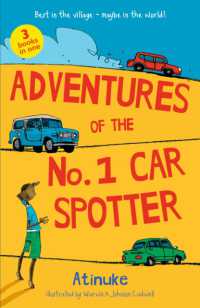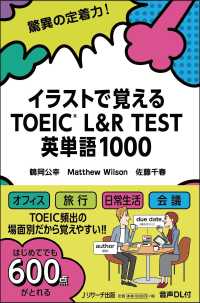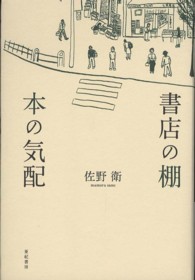Full Description
Fisher & Frey's answer to close and critical reading
No doubt since the cave paintings of prehistoric times, humans have asked questions to make sense of the message. So what could possibly be new about posing questions about text?
Plenty . . . and with TDQ, Doug Fisher and Nancy Frey reveal it all. After one quick read, you will have learned all the very best ways to use text-dependent questions as scaffolds during close reading . . . and the big understandings they can yield, especially when executed the Fisher and Frey way. But that's just for starters. Fisher and Frey also include illustrative video, recommended texts and questions, examples from across content areas, and an online professional learning guide, making the two volumes of TDQ a potent professional development tool across all of K-12.
The genius of TDQ is the way Fisher and Frey break down the process into four cognitive pathways that help teachers "organize the journey through a text" and frame an extended discussion around it. Step by step, this approach ensures that in every close reading lesson, students are guided to consider explicit and implied meanings, and deeply analyze and appreciate various aspects of a text, especially those that may be challenging or confusing.
Here's how the four inter-related processes play out, with every why and every how answered:
What does the text say? (general understandings and key details)
How does the text work? (vocabulary, structure, and author's craft)
What does the text mean? (logical inferences and intertextual connections)
What does the text inspire you to do? (write, investigate, present, debate)
The cool thing? These questions ignite students' engagement and discussion because they strategically lead students to a place of understanding where explicit and implied meanings and interpretations can be debated. Far from being overly literal or teacher-led, the questioning framework Fisher and Frey advance enhances the quality of student talk and idea-generation. All in all, there's no better resource to cultivate students' capacity for independent reading and incisive thinking.
Longtime collaborators and recipients of numerous teaching and leadership awards, DOUGLAS FISHER and NANCY FREY are Professors of Educational Leadership at San Diego State University as well as teacher leaders at Health Sciences High & Middle College.
Contents
Acknowledgments
Chapter 1. Creating Effective Close Reading Lessons
Close Reading Defined
Close Reading in the Elementary Grades
The Phases of Close Reading
How Much Frontloading Is Too Much (or Not Enough)?
Text-Dependent Questions Drive Close Reading
Use Text-Dependent Questions Judiciously
Question Yourself
Videos
Chapter 2. What Does the Text Say?
An Invitation to Read Closely: Literal-Level Questions
Why Students Need This Type of Questioning
Why Classroom Discussion Is Crucial
How Examining What the Text Says Addresses the Standards
Using Text-Dependent Questions About What the Text Says
Question Yourself
Practice Text: "My Shadow" by Robert Louis Stevenson
Videos
Chapter 3. How Does the Text Work?
An Invitation to Read Closely: Structural-Level Questions
Why Students Need This Type of Questioning
How Examining How the Text Works Addresses the Standards
Using Text-Dependent Questions About How the Text Works
Question Yourself
Practice Text: Excerpt From Benjamin Banneker's Letter to Thomas Jefferson, August 19, 1791
Videos
Chapter 4. What Does the Text Mean?
An Invitation to Read Closely: Inferential-Level Questions
Why Students Need This Type of Questioning
How Examining What the Text Means Addresses the Standards
Using Text-Dependent Questions About What the Text Means
Question Yourself
Practice Text: "Instances of the Communication of Cholera Through the Medium of Polluted Water in the Neighborhood of Broad Street, Golden Square" by John Snow
Videos
Chapter 5. What Does the Text Inspire You to Do?
An Invitation to Read Closely: Action-Oriented Questions and Tasks
Why Students Need to Complete These Types of Tasks
How Examining What the Text Inspires You to Do Addresses the Standards
Using Text-Dependent Tasks About What the Text Inspires You to Do
Question Yourself
Practice Text: Excerpt From Introduction to A More Perfect Union: The Creation of the United States Constitution by Roger A. Bruns
Practice Text: The Bill of Rights: A Transcription
Videos
Coda
Appendices: Questions for . . .
Appendix I: Grades K-1
Appendix II: Grades 2-3
Appendix III: Grades 4-5
References
Index
About the Authors
About the Contributors








